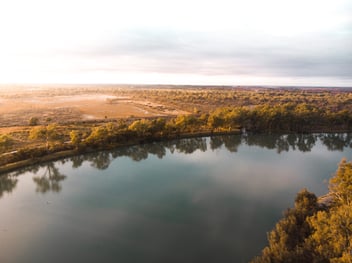How stakeholders in the Colorado River Basin united to battle water shortages
Like Australia, the southwest of the United States (US) has been battling water shortages for decades. To help tackle the problem, stakeholders came together to share the burden and coordinate a way forward.
Established in 2019, the Colorado River Project aims to include the perspectives and insights from more stakeholders than ever before, in order to renegotiate the resources use and shortage guidelines.
Presenting to delegates at Ozwater’20 Online, University of Arizona Water Resources Research Center Director Dr Sharon Megdal said the Colorado River Basin has a long history of hydrology issues.
“The basin is subject to significant stress due to drought and high utilisation of the river,” she said.
“There are many factors in terms of what we see on the ground when managing our water resources. There is a legal framework, there is also centralised versus decentralised nature of decision-making.
“Many international, state and Indigenous nation entities have collaborated to deal with spreading the burden of lower river flows. It’s also important to recognise the public values of socio-culture factors that go into what we see."
Megdal said using the diversity of insight from the vast array of basin stakeholders was crucial in terms of getting the next generation of guidelines right.
“The Colorado River Basin touches on seven US states, as well as the republic of Mexico. It is both an interstate and international river, and water from it supports the activities of an estimated 40 million people, including people outside of the physical boundaries of the basin,” she said.
“Furthermore, in the US, tribal nations are sovereign nations in terms of water management. They, like the US states, have rights to Colorado River water. There are 22 tribes located within the state of Arizona.”
Over the last 20 years, communities in the basin have suffered the effects of long-term drought, Megdal said, with average rainfall and annual flows below average.
“As a result, water storage has been relied upon to the point where we are concerned about the ability to rely on that storage,” she said.
Working together
It was this history of water shortages in the region that led to the adoption of interim guidelines to share shortages in 2007, with further water security threats instigating a new set of regulations in 2009.
“Addressing the issues with hydrology required upper and lower basin states to work together. We had to figure out how we could come to an agreement of how to share the shortage,” Megdal said.
“There were many different agreements needed in order to make the Colorado River Project come to fruition. It has been a tense time. Would Arizona be able to come to an agreement on how to share shortages?”
In terms of the difficulty of uniting all stakeholders on an agreement, Megdal said there were many aspects of the process that helped unify all parties involved.
“We needed functioning cooperative mechanisms, trust and mutual respect … We needed involvement from key stakeholders, innovations in partnerships and voluntary economic arrangements, persistence and patience,” she said.
“The way we learn from each other and share experiences is a very important tool.”
Despite the sign-off on the Colorado River Project, Megdal said the work is not over yet.
“The next step is renegotiating the 2007 interim shortage guidelines,” she said.
“Work on the renegotiations has begun. Many entities and perspectives will be involved; more voices than back in 2007.”
You can still register to access all Ozwater’20 Online content, including presentations from international accent speakers like Dr Megdal. To find out more, click here.

